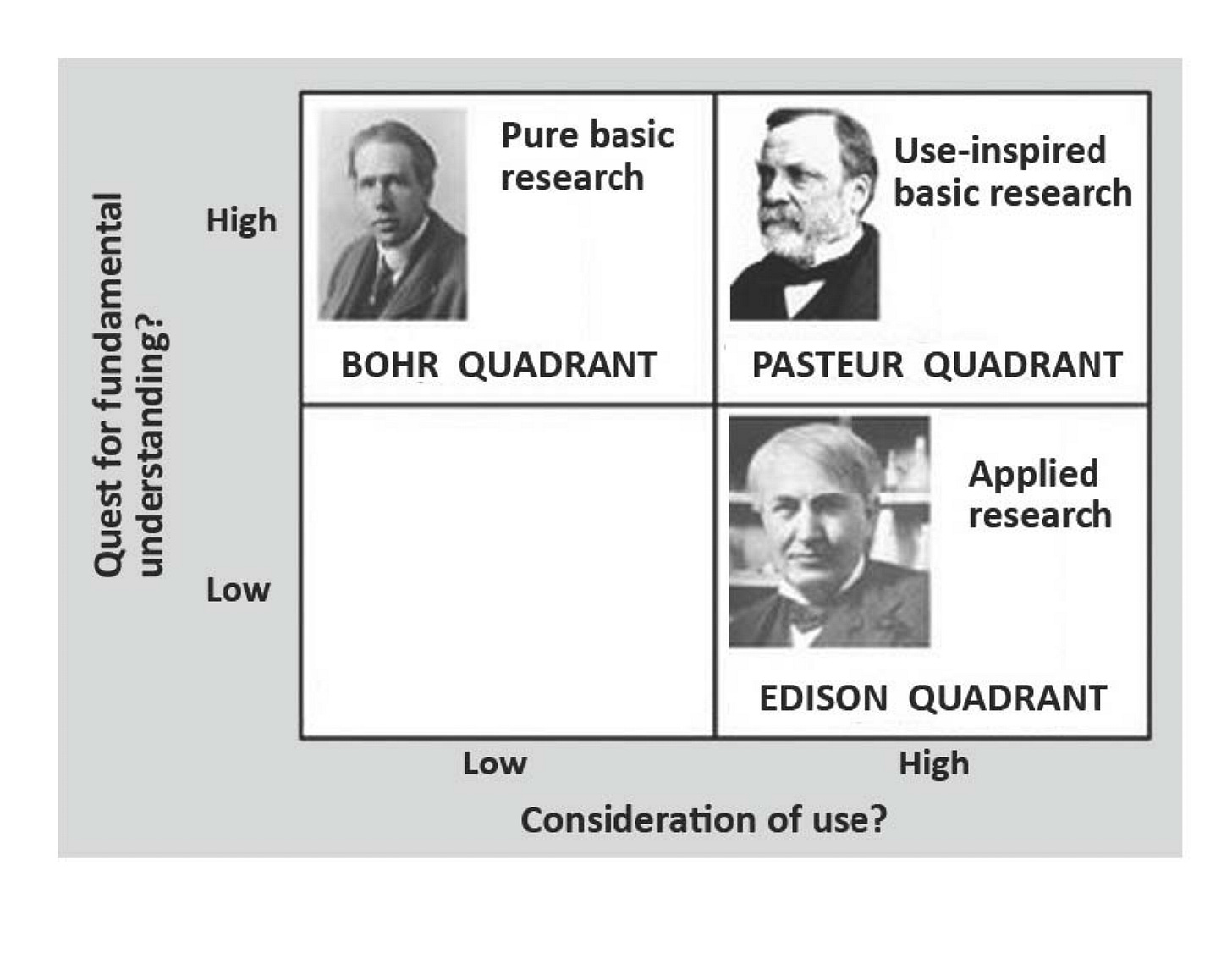If you want to build groundbreaking technology ventures, you need to understand Pasteur's Quadrant
It's not tech transfer ...
Almost every day I hear someone speak about “tech transfer”. The concept goes like this: fundamental scientific advances are made by researchers with no consideration of use. Advances are thought of as a linear progression that begins with basic research, then moves to applied research, and then to development of intellectual property (IP). This IP is usually summarized by the institutions and inventors that own the IP into a prospectus that describes possible potential uses. Often it is then offered to commercial companies for them to consider licensing. Sometimes it is used to create companies.
The linear progression of tech-transfer is illustrated here:
Basic research » applied research » IP » considerations of use » licenses and ventures
This approach can result in successes, but in my experience, it often fails.
But if our goal is to create breakthrough technology companies, there is another way, represented by the Quadrant chart above. This chart was introduced by Donald E. Stokes, a science historian and political scientist, to describe a powerful process of innovation. In the chart the horizontal axis represents consideration of use, and the vertical axis the quest for fundamental understanding.
In the upper left quadrant is the image of Niels Bohr, representing a quest for fundamental understanding characterized by Bohr’s search for a model to explain the atom. His purpose was to contribute to the “general knowledge and understanding of nature and its laws.”
In the lower right quadrant is the image of Edison, who pursued solutions to practical problems or societal needs. For example he is famous for tinkering endlessly to engineer products such as the light bulb, with little heed to theory.
In the lower left quadrant is no-one, because it only represents failure.
In the upper right quadrant is the image of Pasteur, and is known as “Pasteur’s Quadrant.” in Pasteur’s Quadrant researchers aim to explore the underlying principles and mechanisms of natural phenomena, while simultaneously seeking in parallel to develop practical applications or solutions to real-world problems. “Pasteur’s quadrant” is characterized by the career of the great scientist who gave us both the germ theory of disease and the first engineered vaccines, and laid the foundations of microbiology.
We are in a new world now, the world of Pasteur’s Quadrant, where advances in research and simultaneously considerations of use are creating profound opportunities for groundbreaking ventures. The greatest opportunities for new technology ventures will emerge from understanding current science and technology, envisioning uses that are just beyond today's capabilities, and simultaneously developing the fundamental understanding and uses together. There is no longer a dichotomy between basic research and considerations of use. Both build on each other.
An example is of course, Generative AI, where researchers and company founders are advancing both fundamental research as well as AI. Researchers will understand for example, the failures of Generative AI for commercial uses, and build new fundamental research to overcome these failures.
Founders and company-builders no longer needs to follow the linear process from basic research to tech-transfer. Great technology companies will emerge from Pasteur’s Quadrant, simultaneously developing fundamental research together with deep considerations of use.




Hadn't seen this chart before - its a keeper!